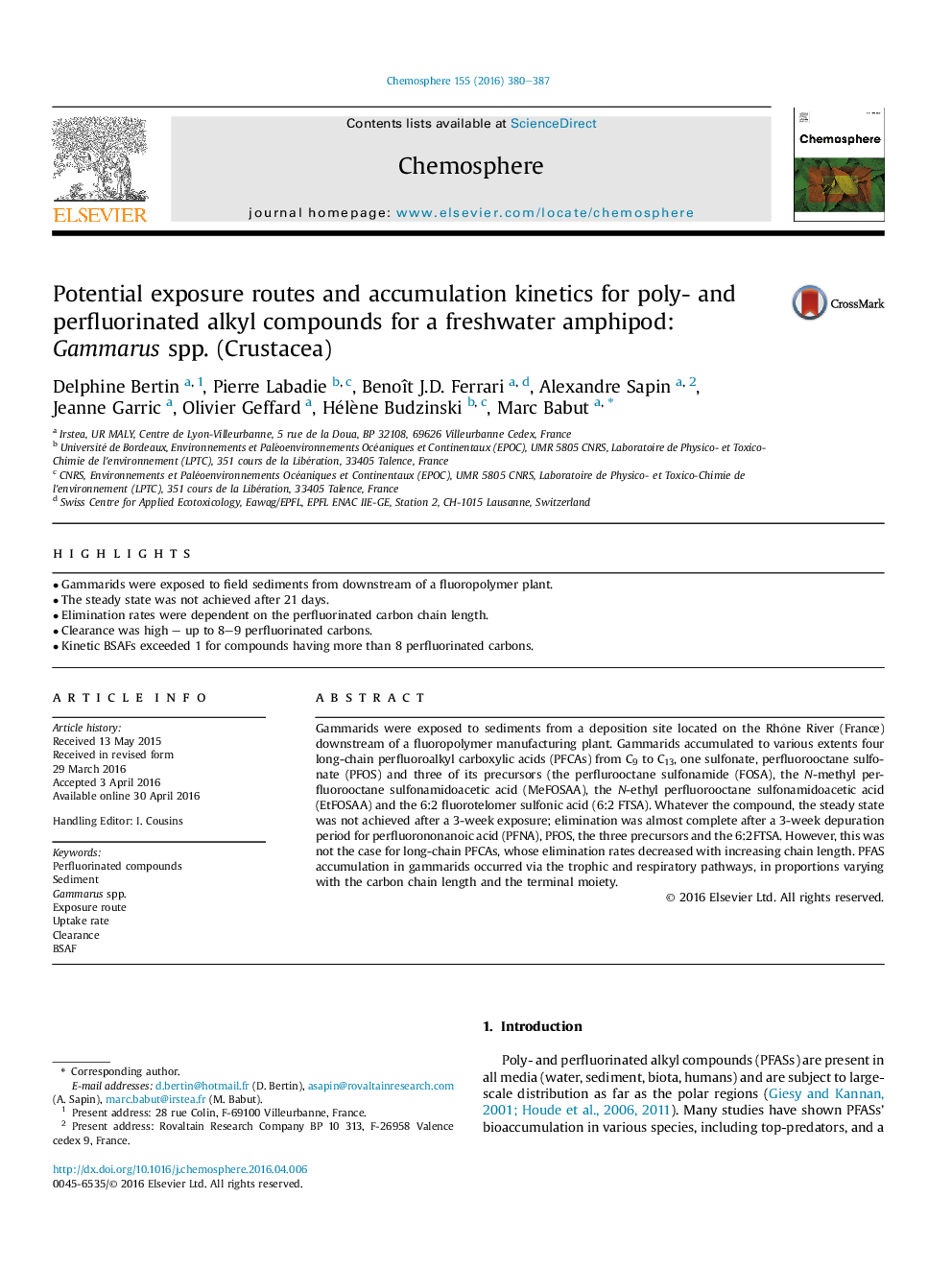| Article ID | Journal | Published Year | Pages | File Type |
|---|---|---|---|---|
| 4407502 | Chemosphere | 2016 | 8 Pages |
•Gammarids were exposed to field sediments from downstream of a fluoropolymer plant.•The steady state was not achieved after 21 days.•Elimination rates were dependent on the perfluorinated carbon chain length.•Clearance was high – up to 8–9 perfluorinated carbons.•Kinetic BSAFs exceeded 1 for compounds having more than 8 perfluorinated carbons.
Gammarids were exposed to sediments from a deposition site located on the Rhône River (France) downstream of a fluoropolymer manufacturing plant. Gammarids accumulated to various extents four long-chain perfluoroalkyl carboxylic acids (PFCAs) from C9 to C13, one sulfonate, perfluorooctane sulfonate (PFOS) and three of its precursors (the perflurooctane sulfonamide (FOSA), the N-methyl perfluorooctane sulfonamidoacetic acid (MeFOSAA), the N-ethyl perfluorooctane sulfonamidoacetic acid (EtFOSAA) and the 6:2 fluorotelomer sulfonic acid (6:2 FTSA). Whatever the compound, the steady state was not achieved after a 3-week exposure; elimination was almost complete after a 3-week depuration period for perfluorononanoic acid (PFNA), PFOS, the three precursors and the 6:2FTSA. However, this was not the case for long-chain PFCAs, whose elimination rates decreased with increasing chain length. PFAS accumulation in gammarids occurred via the trophic and respiratory pathways, in proportions varying with the carbon chain length and the terminal moiety.
